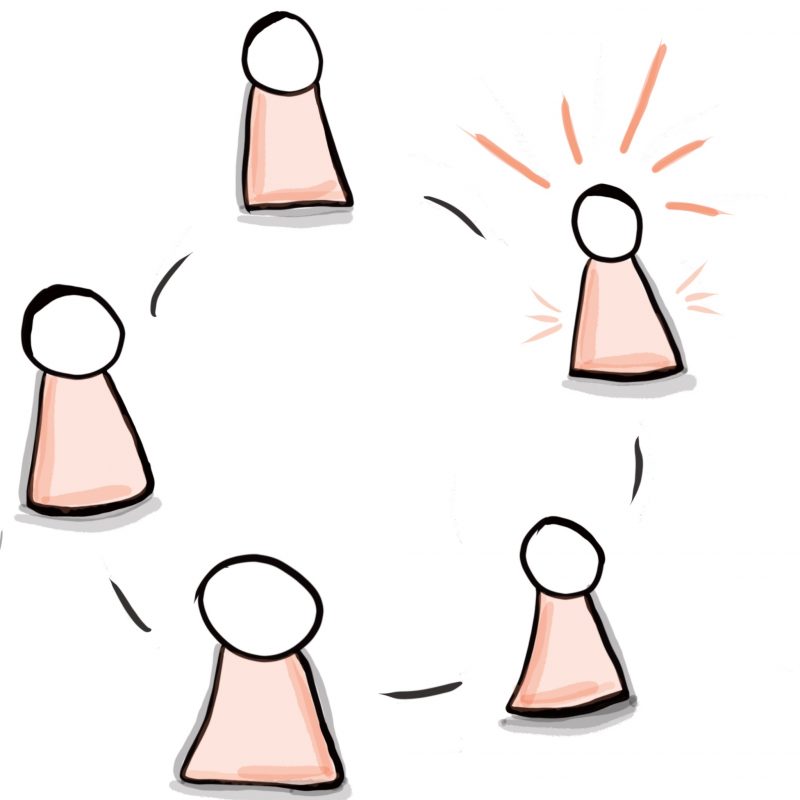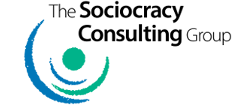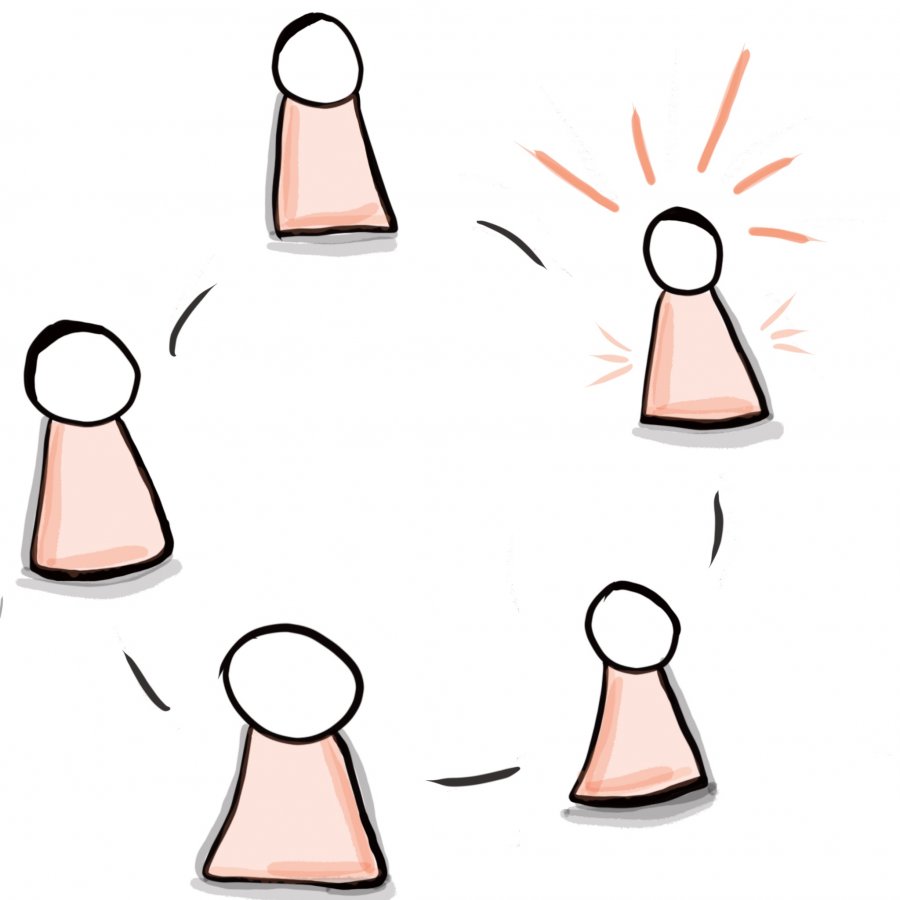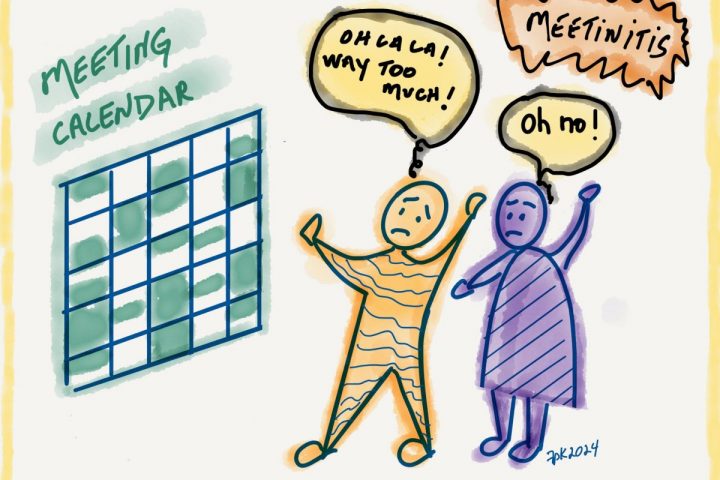“Everything we do depends for its quality on the thinking we do first. Our thinking depends on the quality of our attention for each other.” –Nancy Kline, Time to Think: Listening to Ignite the Human Mind
If you prefer listening to reading, this blog is based on a podcast interview by the same name.

Have you been in a meeting where some people spoke a lot and others barely got a word in edgewise? And some of the speakers were speaking to prove that they were right and others wrong? And when people “listened,” it was to figure out what they would say next in response or maybe in rebuttal?
All of us have at times. It’s painful. And very little happens in terms of new ideas and solutions.
What if there is another way? A round provides that.
What is a round?
In a round, everybody in the group has a chance to speak in turn and without cross talk. People can pass but everyone has a turn to say something if they wish. Rounds have been around for a long time; indigenous peoples have used talking circles for millennia. Most of us grew up using rounds as children in some setting or another. But it’s rare that we use them in a business meeting, and it’s rare that we use them in families.
Why do a round?
If you’re not doing a round, several things can happen. A discussion can turn into a debate. We interrupt each other. People who speak easily in groups speak a lot and others never open their mouths. A round is a way to make sure that everyone gets a chance to speak, and that we actually listen to each other.
If a group will be making a decision about the topic, there is likely to be much more buy-in if everyone has had input. And with more ideas to draw on, the decision is likely to be better.
There are multiple ways to choose a speaking order in a group. People can raise their hands to show they want to speak. The facilitator then states an order by “stacking” the list of speakers. Another Is popcorn, where people interject their ideas at random. Yet another is to agree on a guideline that everyone can speak once before anyone else speaks twice and everyone can speak twice before anyone else speaks four times. But in any of these, there is still a need to make sure everyone has a chance to speak. And I’m watching for when I can get the attention of a facilitator to get my turn. Or watching for an opening to break in and get the group’s attention.
In many of these methods, the facilitator has to determine who has had more or less time to talk. The facilitator’s own unaware biases can affect that process, as studies have demonstrated. For example, classroom teachers, male or female, may perceive that the female students speak more than the male students, even when the opposite is true.
In a round, something in me relaxes when I know everyone, including me, will get a turn to speak. I can sit back and really listen when others are speaking, rather than wonder when to request a turn for myself or plan what I will say next. I can listen to understand new ideas, rather than listen to figure out how to prove someone else wrong.
We do a round to get everyone’s best thinking. When people listen to each other, that is attention, and it is generative. People think better with attention.
Any group has some people who speak less than others, for a variety of reasons. They may be more introverted or they may be shy. Their reluctance to talk may be a result of existing power structures or dynamics, or related to their identity (race, gender, nationality, etc.) relative to the group at large.
Whether for a business meeting or a family meeting, those who see themselves as less powerful might be less inclined to speak than somebody they see as being more powerful. And the person they see as being more powerful might be totally oblivious to this dynamic.
The people who speak less may have been told once too often to shut up. Some of us have gotten the message that people don’t want to know our thinking. That happens to us when we’re children and it happens to us in some workplaces. It’s clear that those people benefit from holding a round.
The surprise to me, as someone who usually speaks easily in groups, is how much I benefit from a round. I know that I tend to talk too much at times. So I monitor myself to make sure other people have a turn to talk. Every time a question comes on the table I ask myself, should I start out the discussion or should I wait? If the latter, how long should I wait? All this means that when I speak or when someone else speaks, I’m spending some of my attention figuring this out and I’m a little bit on edge. With a round, I can let all that go.
I’ve talked with other people who speak easily in groups and report a similar experience as mine. Isn’t that lovely that both people who tend to be quiet in groups and those who speak readily benefit from a round?
When do you use a round?
You can use a round in a team or board meeting. Start the meeting with an opening round. Everyone in turn says how they are doing coming into the meeting. You can offer a more specific prompt as well – for example, “If you were some other animal right now, what animal would you be and why?” An opening round gets people connected, and gives each other information that may help in the meeting. We might learn that one person was up all night with a sick child, or has been spending a lot of time with a family member in a hospital, or just came from a joyous celebration of their brother’s wedding – all things that would affect that person’s state of mind coming into a meeting. We can be more empathic with each other having that knowledge. A meeting where people are connected is likely to be more enjoyable and more productive.
A round is useful for a variety of agenda items. It can help generate ideas about a challenging topic, invite clarifying questions about a presentation or a proposal, or create space for reactions to a proposal.
Evaluate the meeting and the facilitation with a closing round. Each person in turn says what went well in the meeting and offers suggestions for improvement. Or ask a different question in the closing round, such as, “What’s alive for you now?” If there’s anything hanging over from the meeting that we need to say, to leave the meeting emotionally when we leave it physically, we have a chance to say that. A closing round means people are more likely to leave the meeting connected to each other. And it provides feedback so that the group can keep improving.
Even a group of two people can do a round. Take turns listening to each other, rather than interrupting each other and both people talking at once. (If both people are talking, who is listening?) You can even time the turns if you want, to take, say, two minutes each or five minutes each. That’s particularly good to do if the subject is loaded for both of you and it’s hard to listen to each other. It can completely transform the interaction.
Here’s an example of using rounds in a team meeting when considering a proposal. We worked with a company that designs and builds machines to manufacture specialized metal equipment. They needed a naming system for their machines, so both they and clients would be clear about what machine they were talking about. In a policy meeting we facilitated, someone brought a proposal for how to name a new machine. The proposal looked straightforward. The process they used in their meetings called for doing rounds first for clarifying questions and then for reactions to the proposal. From those rounds, it was clear that the issue was more complex, and they needed a more general scheme that would accommodate other machines in the future. They consented to a modified proposal for this machine, and planned to develop a broader proposal at a future meeting to handle more machines.
When I first thought of this example, it seemed to me humdrum. Then I realized that it seemed that way because I have gotten so used to this happening when there are rounds in a meeting. What seems a simple proposal crafted by one person turns into a much better proposal when all people and ideas can be heard, and people aren’t trying to defend their ideas from each other.
Families of all ages use rounds. A family might use rounds to plan a vacation, or decide on a meal menu, or set a policy about screen time for young children. See Francine Proulx-Kenzle’s story of using rounds to discuss family meal times, Spaghetti Night: Mothering with Consent.
In the next blog I will talk about why rounds work so well including some basis in neuroscience, and what gets in the way of using rounds.
Thanks to John Schinnerer for editing assistance with this blog.
For more about rounds, see Three Tips for Meetings that Sizzle and ABC’s of (Virtual) Meetings that Rock.
To explore how to have more effective meetings, or to have us facilitate a meeting for you, see Your Meeting Coach or contact us for a free consultation.
 Sheella Mierson, Ph.D., a founding member of The Sociocracy Consulting Group, helps design relationships, processes, and structures for collaboration so that people and organizations flourish.
Sheella Mierson, Ph.D., a founding member of The Sociocracy Consulting Group, helps design relationships, processes, and structures for collaboration so that people and organizations flourish.




